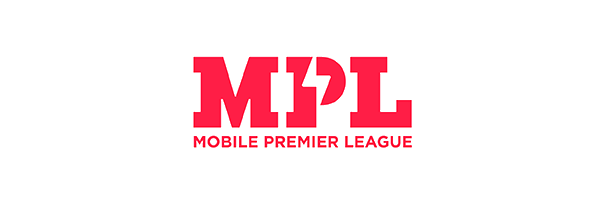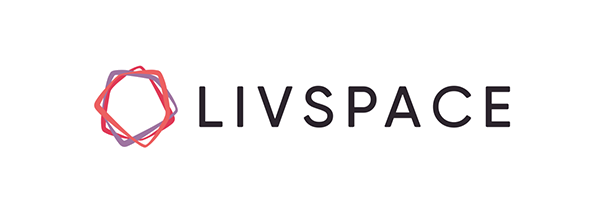What are the steps in the budgetary control process?
Businesses depend on strong money management to bring order to financial chaos. Effective budgeting ensures funds are allocated on time and used for their intended purpose—no easy task for any finance team.
So if everybody knows it, why do only a few companies follow it? Because they forget to make budget reports. Without budget reports, you lack proper insights into how your budgets performed over a specific period.
Without clear insights, creating effective budgets becomes difficult. When budgets don’t deliver expected results, motivation fades—and eventually, you abandon them altogether, returning to financial chaos.
Efficient budget reporting helps you pinpoint the key areas of improvement that led to a mismatch between the result of the business budget and what it was initially intended for, and put a rein of better budgetary control over it.
What is budgetary control, and why is it important?
Definition and purpose
The budgetary control process involves setting financial goals, preparing budgets, and continuously comparing actual outcomes against those budgets. The primary purpose of this system is to guide spending, improve resource allocation, and support long-term planning. It helps organizations stay financially disciplined and focused on measurable objectives.
Importance for businesses
Following the right steps in budgetary control helps businesses monitor financial performance and identify deviations early. The process of budgetary control enhances accountability, supports informed decision-making, and ensures efficient fund usage. When the steps of budgetary control are clearly defined, companies can reduce waste, meet targets, and operate more effectively.
What is a budget report?
Budget reports help businesses compare their ultimate spending versus what was earlier budgeted for. You plan your budget for a specific period, then at the end of it, your financial budgeting report shows you exactly how much you stayed on track.
A typical budget report has two columns one side has the planned allocation of company funds for the particular period, and the other side has the actual value that was spent in the same period. This can help us examine specific areas where the spending levels are high and what measures can be taken to minimize them.

The 5 key steps in budgetary control process
Step 1: Set budget targets
The first step in the budgetary control process is to define clear budget targets for each department, function, or project. These budgets should align with company objectives like reducing costs, maximizing efficiency, or driving revenue growth.
According to the CFA Institute, setting strategic financial boundaries helps guide teams toward measurable results. Involving department heads during this step improves accuracy and commitment. Budget targets serve as financial roadmaps that shape spending behavior across the organization.
When aligned with overall goals, they create a strong foundation for the remaining steps in budgetary control, improving control and accountability throughout the year.
Step 2: Compare actuals vs. budgets
Once budgets are established, the next step is to compare actual financial results with what was originally planned. This comparison allows companies to quickly detect overspending or underspending in real time.
With platforms like Volopay, teams can access live spending data and evaluate budget performance across departments. This step enables organizations to maintain financial visibility and spot trends before they escalate.
It ensures stakeholders can react promptly when spending deviates from projections. Regular analysis of actuals vs. budgets is essential to the process of budgetary control, allowing timely decisions and maintaining alignment with financial goals.
Step 3: Figure out variances
After comparing actuals with budgets, companies must analyze variances to determine whether they represent positive or negative deviations. This step involves calculating how much each category differs from the planned budget and investigating whether those differences are favorable (surplus) or unfavorable (deficit).
For instance, NetSuite’s variance analysis practices suggest examining patterns such as consistent overspending in marketing or recurring operational savings. Understanding the financial impact of each variance helps management prioritize action. This stage is essential in the steps of budgetary control, providing insight into performance gaps that need to be addressed to improve financial accuracy.
Step 4: Identify causes of differences
Once variances are calculated, it’s crucial to understand the reasons behind them. Managers and finance teams should collaborate to explore the root causes, such as delays, pricing changes, or inefficient workflows.
Maintaining open and non-judgmental communication helps departments share honest feedback. The aim is to find whether issues stem from internal processes, market conditions, or strategic decisions.
Identifying causes is a key part of the budgetary control process because it links data with real-world actions. Once the source of variance is understood, it’s easier to create practical solutions that support budget correction and future forecasting improvements.
Step 5: Taking steps to get control
The final step is to implement corrective actions based on the insights gained from earlier analysis. This could include revising budget limits, pausing non-essential expenses, renegotiating vendor terms, or updating internal policies.
Tools like Volopay allow companies to automate alerts and approvals, making it easier to regain control quickly. The goal is to keep financial activities in sync with strategic plans. Acting promptly prevents small issues from becoming bigger financial risks.
Among all steps in budgetary control, this is where decisions lead to real impact, ensuring that budgets remain realistic, flexible, and tightly aligned with company goals.
Types of budget reports for effective control
Choosing the right report depends on organizational goals, the type of financial activity, and the level of detail required. Understanding how each report fits into the steps in budgetary control helps teams select tools that enhance accuracy and visibility.
Effective report selection supports better decisions, promotes accountability, and ensures the process of budgetary control remains structured and responsive.
1. Static budget reports
Static budget reports display fixed budget figures set at the beginning of a period, without adjustment for actual activity levels. These reports help measure performance consistency and highlight significant variances.
They are essential for strategic reviews within the budgetary control process, providing a baseline for financial comparison and supporting specific steps in budgetary control, such as target setting and monitoring.
2. Recurring budget reports
Recurring budget reports are generated periodically—monthly, quarterly, or annually—to track ongoing financial performance. These reports align with the process of budgetary control by offering consistent insights into spending patterns and budget adherence.
Businesses rely on them to monitor recurring expenses, detect anomalies early, and ensure that operations stay aligned with planned financial goals, facilitating timely corrective action when needed.
3. Supplementary budget reports
Supplementary budget reports provide detailed insights beyond standard reports, often focusing on unexpected costs or project-specific data. These are useful when addressing deviations discovered during the steps of budgetary control, offering a deeper understanding of financial shifts.
Supplementary reports help management evaluate unforeseen expenses, reallocate funds, and maintain control without compromising broader financial targets set during the budgeting cycle.
4. Capital budget reports
Capital budget reports are analytical tools commonly used by CFOs and finance teams as part of the capital budgeting process to plan how much capital will be allocated for asset purchases in the year ahead.
These reports focus on long-term investments like equipment, property, or infrastructure. They track budgeted versus actual spending on capital projects, helping ensure alignment with strategic growth plans.
These reports support the budgetary control process by maintaining oversight of high-value assets. Accurate tracking through capital reports helps avoid cost overruns and strengthens financial planning across departments and fiscal periods.
Simplify budgetary control with Volopay’s all-in-one budgeting software
How to prepare a budget report?
List the budget items
First and foremost, it is important to list out all the budget items and their corresponding value. If your department or project has experienced an unprecedented new expense, mark it accordingly.
List the spending for the last quarter or the last fiscal year
Create a detailed spending report for the last quarter or the last fiscal year. You can mark these expenses by department or category. You can further create an additional appendix for a monthly expense sheet breakdown for each department or category. In case an issue is raised regarding specific spending, you won’t have to scramble for monthly reports.
Record the amount
Now that you have your initial intended amount and the actual spending, it’s time to record the difference. Subtract the actual amount spent from the budgeted amount. This gives you your over or under amount. You can further show this amount in percentage by dividing the actual amount by the budgeted amount and then multiplying the ratio by 100.
Write your description
Write a description for any budget variance in the report. However, if the value of fixed costs remains unchanged or the expense is self-explanatory, you can leave the description blank. Be sure to mention the reason for the budget variance. Pay special attention to those items that are way over or under budget. Address these issues and mention a summary of proposed solutions for them.
Highlight over or under budget areas
Items that have gone over or under budget need to be discussed urgently, therefore be sure to highlight them in your next budget analysis report to prioritize them in the meeting.
Finalizing budget report
The summary of a budget report is usually mentioned at the beginning of the document, but it is to be written last by the designated budget reporter. You can mention the steps you have taken to optimize the budget along with any items or targets you have missed in the previous that you shall carry on to the next one.
Additionally, you can also share any achievements, such as gaining high visibility through marketing whilst remaining under budget, etc. This section can highlight how your expenses have contributed directly to the growth factor of the organization.
Suggested read: Ultimate guide on business budget planning
Difference between budget report and financial report
Financial and budget reports serve different purposes—one reflects actual performance, the other plans future financial activities. Here’s a detailed breakdown explaining the key differences between financial reports and budget reports.
Budget report
Budget reports represent a company’s numerous budgets with different periods. The goal of budget reports is to pinpoint how much funds are allocated to each department or division and how well do these departments have utilized these said funds over time.
It is a document that only reports the incoming and outgoing cash flow and therefore is not an ideal marker for your business’s financial health.
You cannot ascertain a company’s performance on budgets alone - they are merely indicators of how your company spends the money available.
Financial report
Financial reports are an in-depth analysis of how well or poorly your business is performing. This report takes into account all budgets listed in a budget report along with a detailed list of your company’s assets and liabilities to calculate its net worth.
It is primarily written for investors and shareholders to reveal the company’s financial health. While budgets are an indicator of how funds are spent in different areas within a company, financial reports are extensive documents, indicating the performance of a company based on its capital utilization, net profit, and overall credibility.
Importance of creating a budget report
Identifying weak areas
Talking about departmental budgeting, you might not even realize how much some departments might be spending until you examine the budget reports.
Only by reviewing their quarterly or monthly expense sheets and budget reports can you get a fair sense of which areas need improvement for restructuring.
Highlighting strengths
Just like budget reports highlight a company’s problem areas, they also shine a light on the best-performing facets of your business.
Budget reports help you accurately spot which team leaders are using their budget more cost-effectively than others. This can help you to award budget surpluses and applaud the great work your team has done!
Deploying funds better
While most businesses experience slower growth owing to departments going over the budgets, others might experience it due to budget mismanagement.
In these instances, budget reports come in handy. It helps you recognize surplus areas and adjust budgets accordingly so that company’s resources are utilized efficiently.
Better business performance
Just like a machine runs better when its internal cogs are well-oiled, similarly successful businesses also rely on receiving regular budget reports to avoid roadblocks, improve efficiency, and reduce company expenses.
All your budget reports get streamlined into creating a financial report that reflects your performance. When revenue is high and inter-departmental expenses are low, the company’s productivity is at an all-time high.
Predictable budget forecasting
Reflecting on your past helps you clarify your future. The same holds for businesses. Budget reporting lets you see the difference between the budget you made versus the actual spending.
At the end of the period, having a budget report reveals departmental overspending or waste that might be contributing to the factor, helping you make accurate spending forecasts for the next budget cycle.
Streamline and transform your budgetary control process with Volopay
Common budgetary control challenges and solutions
1. Overspending by departments
● Challenge
Departments often exceed their allocated budgets due to a lack of oversight, unexpected costs, or poor internal communication, which affects financial planning and disrupts the overall budgetary control process.
● Solution
Use Volopay’s real-time tracking to monitor departmental spend, reducing overruns by 30%. This ensures proactive adjustments and helps reinforce fiscal discipline across teams.
2. Manual reporting errors
● Challenge
Manual data entry in spreadsheets increases the risk of calculation errors, outdated numbers, and inconsistency, weakening the integrity of reports and hampering the process of budgetary control.
● Solution
Automate financial reporting using integrated platforms that eliminate manual inputs, enhance accuracy, and streamline the steps in budgetary control to ensure reliable and timely budget tracking.
3. Lack of transparency
● Challenge
When budget data is siloed or not easily accessible, it limits visibility across departments, causing delays in identifying issues and reducing accountability throughout the organization.
● Solution
Volopay’s centralized dashboard ensures all transactions are visible, enhancing accountability. It offers real-time access to expense data and promotes collaborative financial management.
4. Unforeseen expenses
● Challenge
Unexpected costs, like emergency repairs or supply chain delays, disrupt planned budgets and can lead to reallocation struggles or cash flow shortages without timely adjustments.
● Solution
Create contingency reserves and use forecasting tools to account for unexpected costs. This proactive approach helps maintain stability and supports long-term adherence to budget goals.
5. Resistance to budget policies
● Challenge
Employees and teams may view budget rules as restrictive, leading to non-compliance, missed approvals, or unauthorized spending that complicates control and tracking efforts.
● Solution
Educate teams on policy benefits, involve them in budget planning, and simplify processes using digital tools. This builds buy-in and reinforces compliance with minimal resistance.
Best practices for budgetary control
Regular budget reviews
Conducting regular budget reviews helps ensure that financial plans stay on track throughout the fiscal period. These reviews allow organizations to identify deviations early and adjust accordingly, enhancing the effectiveness of the budgetary control process.
Frequent check-ins improve decision-making, reduce the risks of overspending, and promote accountability among budget owners and stakeholders. This ongoing monitoring encourages transparency and keeps everyone aligned with financial goals.
Clear budget guidelines
Establishing clear budget guidelines is essential for consistent and effective financial management. Well-defined policies help employees understand spending limits, approval workflows, and reporting requirements, supporting the smooth execution of the steps in budgetary control.
Clear guidelines reduce misunderstandings and create a unified approach to maintaining fiscal discipline across departments. Clear communication also prevents budget misuse and streamlines internal controls.
Train finance teams
Investing in continuous training equips finance teams with the skills needed to manage budgets effectively, including specialized areas like IT budgeting. Knowledge of modern tools, reporting techniques, and compliance requirements enhances their ability to execute the steps of budgetary control efficiently.
Well-trained teams ensure consistent application of budget policies and foster a culture of financial responsibility. Ongoing education helps teams stay updated on best practices, regulatory changes, and evolving needs in areas such as IT budgeting and digital transformation.
Plan for contingencies
Incorporating contingency planning into the budget helps organizations prepare for unexpected costs or revenue shortfalls. Setting aside reserves and developing flexible financial strategies strengthens the steps in budgetary control by enabling quick adaptation to changing circumstances.
This proactive approach minimizes disruption and maintains budget integrity even during uncertainty. Contingency plans build resilience and support long-term financial stability.
Leverage automation
Automation tools simplify many aspects of the process of budgetary control by reducing manual errors and accelerating data processing. Automated expense tracking, approvals, and reporting improve accuracy and provide real-time insights into financial health.
Leveraging technology also frees finance teams to focus on strategic analysis rather than routine tasks, driving better budget outcomes. This efficiency boosts productivity and ensures timely financial reporting.
For a deeper understanding of how to apply these best practices in a real-world setting, especially if you're managing a growing company or working with limited resources, visit our blog on Budgeting tips for small businesses. You’ll find practical advice to help small business owners take control of their finances and optimize every dollar spent.
Tools to streamline the budgetary control process
Automated alerts and notifications
Automated alerts notify managers of spending limits, approaching thresholds, or unusual activity. These notifications are vital to the steps in budgetary control, enabling quick intervention and preventing budget overruns.
By integrating alerts into existing workflows, businesses maintain better control and ensure accountability. This tool helps enforce financial discipline and supports smoother execution of the budgetary plan.
Variance analysis dashboards
Variance analysis dashboards visually present differences between budgeted and actual figures, helping teams identify trends and outliers quickly. These tools offer breakdowns by category, department, or project, supporting faster investigation and response.
Dashboards play a key role in the budgetary control process by highlighting problem areas early and guiding corrective actions. They improve financial clarity and support data-driven decision-making.
Spend management platforms
Spend management platforms, like Volopay, help organizations monitor expenses in real time and enforce budget limits automatically. These tools support the steps of budgetary control by allowing businesses to set rules, track purchases, and approve spending requests.
Centralized oversight enables better compliance and reduces financial leakage. With improved control over daily expenditures, companies stay within budget and meet strategic objectives.
ERP integration
Integrating budget controls into ERP systems enhances the process of budgetary control by centralizing financial data and improving accuracy. ERP platforms link budgeting with procurement, inventory, and payroll, ensuring data consistency.
This integration streamlines the steps in budgetary control, reduces duplication of efforts, and provides a single source of truth for budget managers, improving coordination and responsiveness across business units.
Budget reporting software
Budget reporting software simplifies the budgetary control process by offering customizable reports that compare actual performance against planned budgets. These tools enable real-time visibility into financial data, allowing faster decision-making.
By automating report generation, businesses save time and reduce manual errors. This tool is essential for tracking financial health across departments and aligns well with the organization’s strategic goals.
Plan, track, and control budgets effortlessly with Volopay
How Volopay's business budgeting software transforms the budgetary control process
Customizable budget allocation
With Volopay's business budgeting software, organizations can allocate budgets by department, team, project, or vendor. Custom limits ensure funds are used as intended.
This flexibility improves the steps in budgetary control by letting managers create targeted controls. Budget owners gain more authority while the system enforces compliance, balancing autonomy with centralized visibility and oversight. Such tailored budget control supports accountability across all organizational levels.
Real-time budget tracking
Volopay provides real-time visibility into expenses, allowing finance teams to track every transaction as it happens. This instant access supports quicker decisions and stronger financial control.
By integrating live data into the budgetary control process, Volopay helps businesses reduce overspending, enforce limits, and ensure each step is aligned with company goals and spending policies. This level of responsiveness allows teams to course-correct before small issues become major budgetary problems.
Seamless ERP integration
Volopay easily integrates with leading ERP systems, syncing financial data without manual uploads. This reduces errors and enhances the process of budgetary control by creating a unified source of truth.
With synchronized workflows, businesses maintain accurate records, improve audit readiness, and streamline approval chains across procurement, finance, and operations. It eliminates data silos and fosters smoother communication between departments.
Virtual card controls
Volopay’s virtual cards come with spend limits, expiry dates, and merchant restrictions, providing high control over corporate expenses. These built-in safeguards align with the steps of budgetary control, ensuring transactions are pre-approved and monitored in real time.
Virtual cards simplify reconciliation while enhancing fraud protection and regulatory compliance. They offer a smart, secure way to manage both one-time and recurring purchases.
Scalability for growth
As companies expand, Volopay scales with them, managing increasing transaction volumes and complex budget structures. The platform adapts to evolving needs without compromising efficiency.
This makes it ideal for businesses seeking a long-term solution to improve every phase of their steps in budgetary control as they grow across markets and teams. It supports financial control from the startup phase to the enterprise scale effortlessly.








Trusted by finance teams at startups to enterprises.
Automate budgeting processes and monitor spending with Volopay today!
FAQs about the budgetary control process
Budgetary control focuses on planning and monitoring budgets to manage resources effectively, while financial reporting presents historical financial data and overall company performance. Budgetary control is proactive, helping steer spending according to plans, whereas financial reporting is retrospective, offering insights after transactions have occurred. Both functions complement each other to provide a complete financial management framework.
Budgets should be reviewed regularly, ideally monthly or quarterly, to ensure alignment with business objectives. Frequent reviews help identify variances early in the steps of budgetary control, allowing timely corrective actions. Regular monitoring supports dynamic financial management and helps maintain control over spending throughout the fiscal year. This practice ensures budgets remain relevant and adaptable to changing business conditions.
Expenses that are excluded while creating a budget report are depreciation, obsolete inventory charges, lawsuit settlements, losses from the sale of assets, etc.
Volopay simplifies the steps of budgetary control by offering real-time expense tracking and customizable virtual cards. Its seamless integration with platforms like Xero and QuickBooks ensures accurate data syncing. These features help businesses monitor spending closely, enforce budgets, and automate approvals, making budget management more efficient and reducing financial risks. By providing instant visibility into expenses, Volopay enables quicker decision-making and better budget adherence.
Yes! Volopay offers a complete department analysis report for each departmental budget you have created. You can view this on your dashboard or export it to download and present during meetings.